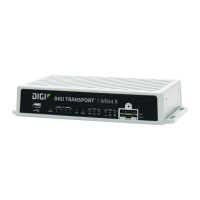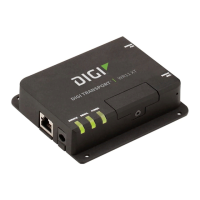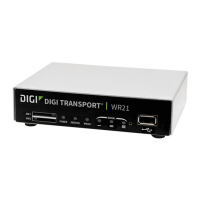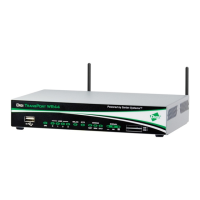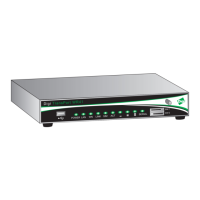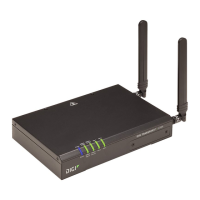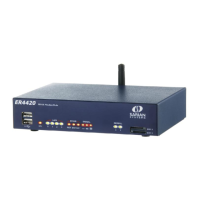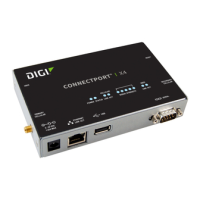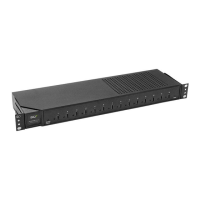View the TransPort routing table
Digi TransPort User Guide 349
View the TransPort routing table
To view the Digi TransPort routing table from the web interface, navigate to
Management > Network Status > IP Routing Table.
From the command line, use the command:
route print
Supported routes
TransPort routers support three main types of routes:
•Dynamic routes
• Static routes
•Default routes
Dynamic routes
Dynamic routes are created automatically when an interface is configured or connected.
For example configuring an Ethernet 0 interface with an IP address of 192.168.1.1 and mask of
255.255.255.0 will cause a dynamic route to be created automatically.
Thus any packet with destination IP address in the range 192.168.1.0 to 192.168.1.255 will
automatically be routed through to the Ethernet 0 interface.
Static routes
To add static routes, configure a route in Configuration > Network > IP Routing/
Forwarding > Static Routes > Routes 0 – 9 > Route n, where n is an instance number.
The minimum configuration settings required to add a static route are:
•IP Address
•Mask
•Interface
•Interface number
If a static route is pointing at an Ethernet interface then optionally a gateway IP address can be
added. If a gateway IP address is not added then the gateway IP address configured for the
Ethernet interface itself will be used automatically.
Default routes
To add default routes, configure a route in Configuration > Network > IP Routing/
Forwarding > Static Routes > Default Route n, where n is an instance number.
Default routes will match packets with any destination IP address (when in service).
If a default route is configured, packets with destination IP addresses that do not match any of
the dynamic or static routes will be sent out the interface specified in the first in service default
route.
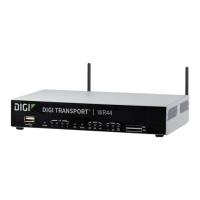
